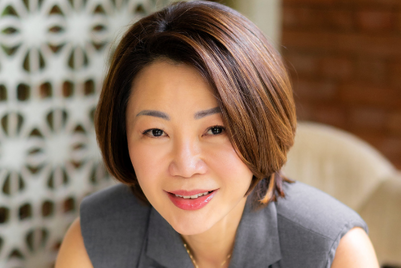
When it launched its 'Real Beauty' campaign in 2004, Dove chose to feature real women of diverse shapes, sizes, and ethnicities rather than traditional models. When the video of this project was released, it quickly went viral, at at time when this term did not even exist. Dove reported that it racked up over 50 million views within just 12 days.
The idea for the campaign was born when Dove and Ogilvy teamed up with artist Gil Zamora to sketch how women perceive themselves. The experiment revealed that over 80% of women saw distorted versions of their own appearance, reflecting a lack of confidence in their looks.
Challenging the hard-to-attain beauty standards that the fashion and movie industry had epitomised, the ‘Real Beauty’ campaign resonated deeply with consumers over time. More significantly, it sparked important conversations about beauty standards, body positivity and self-esteem.
What’s more, it reportedly boosted Dove’s sales and significantly enhanced the brand loyalty. In a press statement, it claimed to have achieved “its highest underlying sales growth in more than a decade in 2023”, delivering €6 billion for its parent company, Unilever”. This underlined that how the campaign had a lasting impact on brand perception, demonstrated the power of prioritising long-term goals over short-term results.
Dove is not only brand to have benefited from leveraging campaigns in the long run—Tata Tea saw this with its ‘Jaago Re’ series. Launched in 2007 as a cause marketing campaign around Indian elections to raise awareness and encourage positive storytelling about India, it has evolved over time, moving from spreading positivity to 'Simplify'—a partnership with experts to break down complex issues in the news. In 2012, Jaago Re tackled gender stereotyping, collaborating with actor Shah Rukh Khan and directo R Balki on a TV spot where Khan vowed to list actresses' names before his own in movie credits, a first in Bollywood. Today, Jaago Re focuses on driving mass behavioural changes to combat climate change.
However, things seem to be changing in adland, largely because of how the landscape has been evolving, where performance metrics are becoming the defining cornerstone of a campaign’s success. But is it at the cost of creativity?
Data, the oil that keeps the business going
A decade ago, companies and ad agencies primarily relied on TV, radio, and out-of-home (OOH) advertising to reach large audiences. Measuring the impact of these campaigns was largely undefined; most it came from viewer feedback or more importantly, industry awards.
The rise of newer channels, including broadcast video on demand (BVOD), advertising-based video on demand (AVOD), connected television (CTV) as well as social media has shaken, and stirred, things up. The emergence of these platforms, along with programmatic advertising and digital OOH, have seen even traditional channels being corralled into measurable entities. In addition to coming up with newer methods for targeting audiences, they are justifiably leaning towards outcome-based metrics.
This shift towards performance-based metrics measurability is welcome, and also needed. It has, however, raised concerns about whether an excessive focus on short-term results is seeing agencies neglect broader brand and business objectives.
After all, while outcome metrics like click-through rates, conversion rates, and return on ad spend (ROAS) are important, an overemphasis on these indicators can overshadow long-term brand goals. According to Sandiip Kapur, founder and president of Promodome Group, when agencies concentrate solely on short-term performance indicators, “they might overlook crucial areas like brand awareness and perception, customer lifetime value, and overall business impact."
Treading the fine balance
The advertising game has evolved from simply getting impactful ads out there, which often take days to conceptualise, to obsessing over clicks and viewability while riding the latest trend. Today, success is a delicate dance of creativity, timing, and targeting—hitting the right people with the right message at just the right moment.
But as metrics multiply, it’s crucial not to let data-driven precision squeeze the life out of creativity. In a world where algorithms rule, the heart of a campaign still beats in its creative spark—because no metric can replace the power of a truly unforgettable idea.
Take the case of the Amul girl, who has been serving up laughs and clever commentary for over five decades, and has become an icon of Indian advertising. What’s the secret of this success?
The key ingredients are perfect timing and a generous dash of tongue-in-cheek humour. Whether it’s cricket drama or political antics, these ads have always hit the mark, staying relevant by capturing the pulse of the nation with a cheeky grin. It’s no wonder the Amul girl is still going strong—after all, who can resist a good pun with their butter?
Hence, to navigate the complex ad landscape, brands must strike a balance between short-term performance and long-term brand building. David Aaker, a marketing expert, underscores the importance of brand equity as a driver of business success. In his book, ‘Building Strong Brands’ he points out that durable brands foster high levels of awareness and emotional connections with consumers, which provide resilience against competitive challenges.
Creativity, served up fresh
There's no doubt that measurement remains crucial in today’s competitive environment, allowing advertisers to target more precisely and assess real-time ad performance. It should not come at the cost of creativity.
When Kraft Heinz faced declining business metrics, they turned to an old company mantra, "Do a common thing uncommonly well." Instead of obsessing over ad metrics, they embraced creativity, which the company discussed candidly at this year’s Cannes Lions International Festival of Creativity.
The company undertook a simple $50,000 experiment where it asked people to draw ketchup, and everyone sketched Heinz—showing the brand's deep-rooted presence in consumers' minds. It then tapped into real stories, like teens sneaking Heinz into schools and organic celebrity shout-outs, and launched quirky campaigns like sauce-mixing machines.
This exercise of using a creativity solution to solve a business challenge helped Heinz prove that even a century-old brand can rebrand itself through bold, inventive ideas. It also underlines that these ideas might not necessarily come from crunching data from measurement platforms depend for precise targeting and real-time measurement of ad performance.
The growing emphasis on results allows advertisers to hold the emerging new communication channels accountable and prioritise campaigns with the highest return on investment. Yet, often times, the best solutions still remain those that emerge out-of-the-box.
The client’s diktats
While outcome-based metrics have transformed how traditional advertising channels used to operate and brought in new possibilities, some industry experts argue that the shift towards digital performance metrics is not necessarily driven by the ad agencies. Instead, it reflects changing client demands and undulating market dynamics.
The reason? Companies seek for efficiency and accountability in their marketing campaigns. Agencies have no option but to cater to their needs in a bid to retain these accounts. But they still try to educate their clientele on things that they pick on social listening and how to leverage it for long-term gain. "At agencies, the goal isn't to measure the reach of the original medium but to collect what level of conversation their idea generated on social media," says Saksham Jadon, founder and CEO of Youngun.
In such a scenario, the biggest challenge for ad agencies is finding a balance between easily quantifiable metrics and less tangible but equally crucial factors for brand building and then fusing it with creativity. Siddharth Jhawar, general manager of Moloco India, highlights that "if you can’t measure it, you can’t improve it—it is important to measure and analyse the effectiveness of every single rupee spent on advertising.”
Let creativity’s light shine bright
The advertising industry has gradually emerged from a phase when it was entirely opaque and difficult to measure. While that is a welcome positive change because it instils discipline and efficiency in advertising spends, measurement obsession is an extreme end of the spectrum, when advertisers start measuring outcomes while ignoring the context in which they measure and interpret results.
Smart brands and smarter agencies are beginning to recognise that bottom-funnel success is intrinsically linked to upper-funnel investments. They are developing more holistic measurement frameworks that blend long-term and short-term goals, recognising that while CTV offers precise targeting and measurement capabilities, its true potential lies in brand building. By adopting a more comprehensive approach, advertisers can ensure their efforts not only achieve short-term campaign wins but also contribute to enduring brand success.
After all, while the modern advertising landscape offers unprecedented opportunities for measurement and precision, it is imperative for brands to not lose sight of the foundational elements of brand-building. Prioritising brand identity and long-term connections with consumers can yield dividends that extend far beyond immediate metrics.
Sticking rigidly to best practices like prioritising campaign metrics can lead to a bland, one-size-fits-all approach. To stand out, brands need to recognise that while consumers hate being tracked, they love being listened to. And listening to what their clientele is whispering will help them spark real conversations with them and then craft personalised experiences.
As the Dove ‘Real Beauty’ campaign powerfully demonstrated, true success lies in the ability to resonate with audiences on a deeper level, creating lasting impressions that withstand the test of time.


.jpg&h=334&w=500&q=100&v=20250320&c=1)


.png&h=334&w=500&q=100&v=20250320&c=1)

.jpg&h=334&w=500&q=100&v=20250320&c=1)
.png&h=334&w=500&q=100&v=20250320&c=1)
.png&h=334&w=500&q=100&v=20250320&c=1)

.png&h=334&w=500&q=100&v=20250320&c=1)

+(6).jpg&h=268&w=401&q=100&v=20250320&c=1)
.jpg&h=268&w=401&q=100&v=20250320&c=1)


.png&h=268&w=401&q=100&v=20250320&c=1)
.jpg&h=268&w=401&q=100&v=20250320&c=1)
